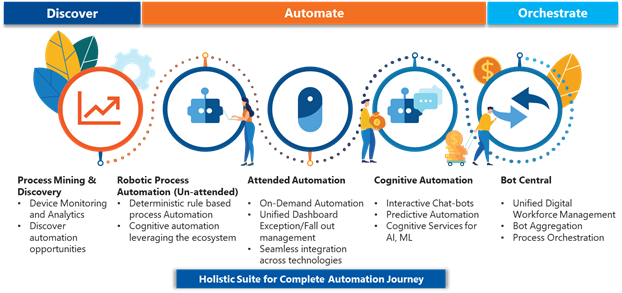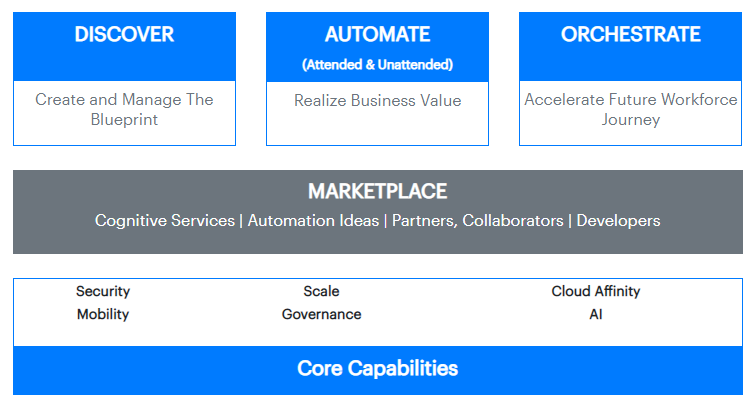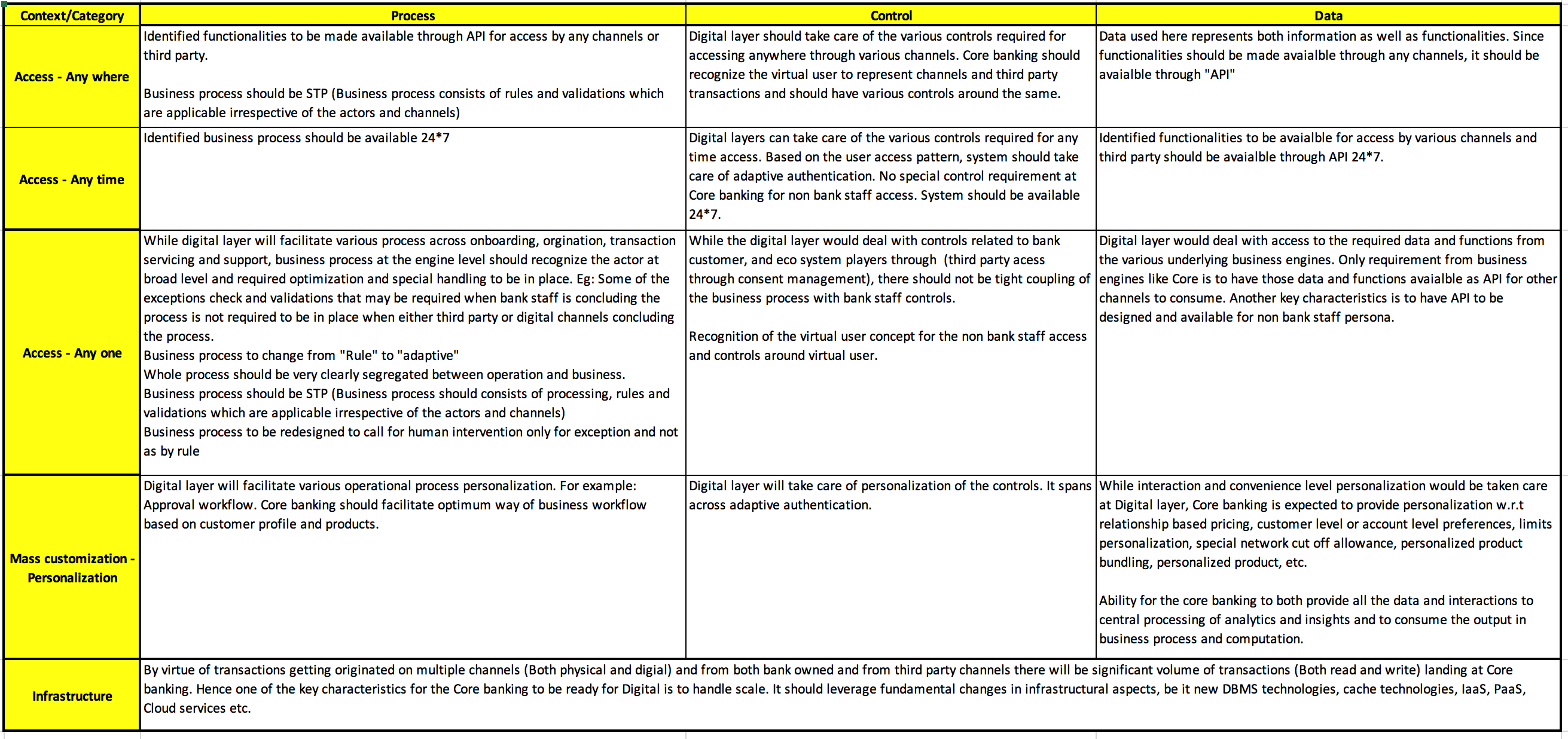Intelligent Automation or the combination of Artificial Intelligence and automation has grown substantially over the years and across various industry sectors including, healthcare, banking and insurance, retail, and manufacturing. According to Gartner, RPA is the fastest-growing segment of the global enterprise software market. With such tremendous growth, enterprises are taking advantage of the opportunity, spearheading RPA initiatives like never before.
What then is needed to implement Intelligent Automation? How can enterprises overcome the resistance to change? What change management strategies can enterprises implement? In this blog, we will take you through some of the key steps or checklist needed to implement Intelligent Automation Change Management across all levels of an organization.
What is Change Management?
Change is inevitable in life and enterprises are no exception. Implementing IT projects require enterprises to adopt new automation solutions, gear up for a data-driven market, and address the change management challenges head-on. Despite the popularity, enterprises are hesitant to adopt disruptive technologies such as RPA and Intelligent Automation. What is stopping enterprises from embracing digital technologies?
SSON’s findings summarized in the 2019 State of the Global Shared Services Market Report states that insufficient change management is one of the top reasons an enterprise’s IA/RPA project has run into trouble. The IA Global Market Report 2019 also highlights that digital transformation will largely succeed or fail based on effective planning and execution of change management. The report also emphasizes that all transformation programs have critical areas that require a change management framework — IT Change Management (ITCM), Business Process Change Management (BPCM), and Organizational or People Change Management. These three disciplines have a profound impact on effecting enterprise-wide transformation.
It is not only crucial for enterprises to embrace new automation solutions but also necessary to obtain buy-in from all stakeholders involved — employees, clients, partners, and overcome the resistance to change by adopting new, digital tools.
Intelligent Automation defined
Robotic Process Automation is the automation of rule-based, repetitive tasks whereas Intelligent Automation applies Artificial Intelligence and related technologies such as Computer Vision, Cognitive automation and Machine Learning to make intelligent decisions, thereby improving accuracy and eliminating errors.
At EdgeVerve, we believe that enterprises will have to transcend from ‘Deterministic Automation’ to ‘Intelligent Automation’ and to ultimately ‘Human-empowered Automation’. And, traversing this journey requires a synergy of people, process, and technology, which is essential for implementing change across an enterprise.
This is certainly an exciting time for enterprises. Harnessing the power of automation helps them stand out from the competitors, heralding a future of innovation, human-digital worker collaboration, and intelligent decision-making.
Here are a few steps to a successful Intelligent Automation implementation:
Embrace change across all levels of an organization: Is your organization ready for intelligent automation? Is your organization ready for change? Answering these questions and working towards digital transformation is an important first step that enterprises need to take. It’s indeed a mammoth task to win over your employees and partners to support change. Change in mindset and across an enterprise does not occur overnight. It’s a gradual process and one that involves the synergy of people, processes, and technology.
Develop an automation strategy and identify best use cases: What processes should you automate? As we know, RPA is a platform that helps automate repetitive, tedious tasks, relieving the employer to focus on higher-value work. From developing an automation strategy that outlines and identifies the use cases that are appropriate for automation to ensuring your automation strategy aligns with the overall business vision is critical. While identifying the use cases, it’s also necessary to understand the capabilities of a human worker and whether the use cases can scale and sustain.
Appoint leaders to drive change: In addition to collaborating with IT teams, partners, and customers, it’s also imperative to assign change champions. These change champions are well-versed with the automation strategy and go the extra mile to spearhead RPA projects across all levels of an organization. They work on rewiring the enterprise by introducing new applications, new operating models, and entirely new approaches that facilitate change.
Reskill your existing talent: Will humans merge with machines? Will robots replace human workers? As enterprises gear up for human-empowered automation, existing employees must be trained on new automation tools and technologies in order to leverage the full potential of intelligent automation. Organizational readiness should go hand-in-hand with training and upskilling existing talent for the future workplace. Enterprises today are introducing upskilling programs to prepare for an AI-driven future that’s impacting all industries and sectors.
In short, we can say that, from developing a clear automation strategy to selecting the right tools/processes, these factors drive change across an enterprise, ensuring change management implementation successful. Download the IA Global Market Report 2019 report to learn all about change management and the three disciplines.


